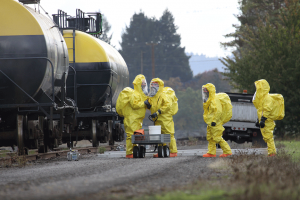Critical Incident Management:
Working in the Edge of CHAOS
Virtual Session: 12/4/20 to 1/3/21
In Class, Session-1: 1/4/21 to 1/8/21
In Class, Session-2: 2/8/21 to 2/11/21
You must attend all three parts of this course for credit.
 There is no cost for attending this course. The course has been funded by the Bay Area Urban Areas Security Initiative (BAUASI). Class maximum is 24 students. Registration is through the Bay Area Training and Exercise Program (BATEP) Portal:
There is no cost for attending this course. The course has been funded by the Bay Area Urban Areas Security Initiative (BAUASI). Class maximum is 24 students. Registration is through the Bay Area Training and Exercise Program (BATEP) Portal:
www.batep.org
This course will benefit any field personnel who will be the first-responding incident commander at any large-scale critical incident.
Executive Summary
This course was created to teach incident commanders and decision makers involved in the response to critical incidents, the specific knowledge, skills, and attitudes required to swiftly, safely, and ethically respond to critical incidents and significant events, including strategies used before a critical incident occurs. The primary focus is to increase event management at the local level by establishing a framework that can expand and contract as needed. Moreover, a sound, productive and purposed regional response ensures a smooth integration of federal assets should they be required.
The course is specifically designed to achieve measurable student outcomes utilizing blended learning, classroom facilitation, and scenario-based training built upon a solid foundation of adult learning principals. Students will demonstrate the ability to apply intuitive sense-making strategies while working in a fast-changing, chaotic environment by using the 5 Tenets of Working in The Edge of Chaos©. The importance of course material is accentuated by the intense scrutiny that the incident commander’s decisions and methods will receive after an event. Graduates of this course will have the knowledge and skills to establish and maintain a productive and purposed incident command.
Congress has recognized the need for federal programs to assist state and local jurisdictions with preparation for managing critical incidents effectively. Recent events within the U.S. and abroad have demonstrated the particular urgency for managing the first hour of critical incidents, also known as “The Hour of Chaos.” As threats have increased and evolved, the U.S. Government has expanded its support for initiatives to prepare federal, state, and local emergency services.
This is a highly interactive course designed to place students in the role of Incident Commander under a variety of real-word situations. Students learn tactical concepts taught by a renowned cadre of experts including published authors of critical incident management tactics. Students apply course material through a series of increasingly complicated role-play scenarios to acquire the skill sets and confidence necessary to take charge when others might falter. Particular emphasis is placed on managing an incident within the critical first, or “golden,” hour when choices made by commanders can have significant impact on the ultimate resolution of the event. The unique blended learning approach ensures students grasp the conceptual knowledge required to manage under crisis and demonstrate competency by applying course content before they even set foot into the classroom.
Course Schedule Information
Virtual Classroom Session: 12/04/20 to 01/03/21, 30 days (8 hours certified instruction)
Session-1: 01/04/21 to 01/08/21, 5 days in classroom (40 hours)
Course Recess: 4 weeks
Session-2: 02/08/21 to 02/11/21, 4 days in classroom (32 hours)
Class Size: 20
You MUST complete the virtual component and both classroom session in order to complete the course and receive POST credit.
Background
This class is for supervisors who will be the first-responding incident commander at the scene of a large-scale, critical incident. It is unique because it focuses on the thinking process of why and how ICS is used within the NIMS framework, claiming that without this understanding, an incident  commander will be unable to use ICS in such a way that will allow them to successfully work through the initial, chaotic phase of a critical incident. Based on solidly accepted and broadly-based research, the course begins with introducing the student to such topics as the Cynefin framework (Dr. David Snowden), Sensemaking (Karl E. Weick), Mental Slides (Dr. Arjen Boin), and characteristics of High-Reliability Organizations (Ericksen & Dyer, Cornell University). The most important of these topics is Sensemaking and its imbedded working pieces of adaptability, manipulation, and improvisation of all of the following: environment, bad actors and responding resources at the scene of a large-scale, critical incident.
commander will be unable to use ICS in such a way that will allow them to successfully work through the initial, chaotic phase of a critical incident. Based on solidly accepted and broadly-based research, the course begins with introducing the student to such topics as the Cynefin framework (Dr. David Snowden), Sensemaking (Karl E. Weick), Mental Slides (Dr. Arjen Boin), and characteristics of High-Reliability Organizations (Ericksen & Dyer, Cornell University). The most important of these topics is Sensemaking and its imbedded working pieces of adaptability, manipulation, and improvisation of all of the following: environment, bad actors and responding resources at the scene of a large-scale, critical incident.
While these topics are indisputably founded in academic research, they would have limited usefulness without experienced practitioners to vet the ideas and determine how they actually function in the real world of critical incident response. To that end, a small team of extremely experienced law enforcement ranking officers reviewed this research, found it to be sound in application to the field, and then crafted the second  week of instruction that puts to use the concepts learned in the first week solely through the teaching tool of reality-based scenario training. This is the second completely unique aspect of this class. Unlike others that use computer simulators to create a virtual environment, camera footage from previous events, or scripted tabletop exercises, research, again, shows that the benefit of stress inoculation to actual field performance (Lt. Col. Dave Grossman and Amanda Ripley’s work with the US Special Forces) is undeniable. In order to gain this, all senses must be engaged: sight, sound, hearing, smell and, if possible, taste. This course offers a 32 hour week of intensive reality-based scenario training using role players and physical environment to create and accomplish just this. In an even more unique aspect, there are no scripts for these events. A live police dispatcher is used over real police radios, just as it would happen in the field, and because of this, each student not only participates in the scenario, but creates it as they take action or choose inaction. These scenarios are very student intensive, with each student being placed in the role of incident commander several times throughout the class with instructors closely monitoring their actions, failures and successes. The last day is reserved for the instructors to speak with each student individually and give him/her specific feedback on his/her performance in order to allow them to improve in future critical incidents.
week of instruction that puts to use the concepts learned in the first week solely through the teaching tool of reality-based scenario training. This is the second completely unique aspect of this class. Unlike others that use computer simulators to create a virtual environment, camera footage from previous events, or scripted tabletop exercises, research, again, shows that the benefit of stress inoculation to actual field performance (Lt. Col. Dave Grossman and Amanda Ripley’s work with the US Special Forces) is undeniable. In order to gain this, all senses must be engaged: sight, sound, hearing, smell and, if possible, taste. This course offers a 32 hour week of intensive reality-based scenario training using role players and physical environment to create and accomplish just this. In an even more unique aspect, there are no scripts for these events. A live police dispatcher is used over real police radios, just as it would happen in the field, and because of this, each student not only participates in the scenario, but creates it as they take action or choose inaction. These scenarios are very student intensive, with each student being placed in the role of incident commander several times throughout the class with instructors closely monitoring their actions, failures and successes. The last day is reserved for the instructors to speak with each student individually and give him/her specific feedback on his/her performance in order to allow them to improve in future critical incidents.
Finally, this course is the beginning of individual cohorts per course session that interact with each other and their instructors in an on-line, MOODLE environment that works much like the Naval Postgraduate School National Security Studies M.A. program does: students are given pertinent reading and writing assignments on-line three weeks before the class starts; they have additional assignments in between the two course sessions; and, finally, upon completion of the course, that cohort is admitted to the broader alumni group on-line where experiences, research and contacts may be shared, thus creating a library of constantly evolving best practices in the field of critical incident response.
 This is a California POST certified class and a nationwide DHS certified class. Past course offerings received reviews from students such as, “This is the best course I have ever attended”; “This is unlike any training I have ever attended before”; “Every ranking officer in our command staff needs to go through this class”; and “I will be using this information back at my department.” Several students individually emailed instructors immediately following the course to tell them how much they learned from their experience. While that can be typical with a class, the unique event which speaks to the success of this course is that even six months after its conclusion, students are still emailing the instructors to discuss their successes and challenges with applying principles from the class to their work environment and asking for further resources.
This is a California POST certified class and a nationwide DHS certified class. Past course offerings received reviews from students such as, “This is the best course I have ever attended”; “This is unlike any training I have ever attended before”; “Every ranking officer in our command staff needs to go through this class”; and “I will be using this information back at my department.” Several students individually emailed instructors immediately following the course to tell them how much they learned from their experience. While that can be typical with a class, the unique event which speaks to the success of this course is that even six months after its conclusion, students are still emailing the instructors to discuss their successes and challenges with applying principles from the class to their work environment and asking for further resources.
Course Instructors
- Sid Heal
Commander, LASD (retired)
Current President, California Association of Tactical Officers (CATO)
- Mike Hillmann
Assistant Chief, LA Port Police, Deputy Chief LAPD (retired)
Assistant Sheriff, Orange County Sheriff’s Department (retired)
- Jay Johnson
Chief, Newport Beach Police Department (retired)
- Mike Jones
Lieutenant, Sacramento County Sheriff’s Department
- L.D. Maples
Assistant Chief, California Highway Patrol
- Steve Nottingham
Lieutenant (retired)
Long Beach Police Department
- Cynthia Renaud
Chief, Folsom Police Department
- Kris Allshouse
Executive Director, Los Angeles County Regional Training Center
Instructor cadre may change from course to course without notice.
For additional information or questions call (888) 782-4969 or email chaos@lacrtc.org
Venue Information
Alameda County Sheriff’s Regional Training Center
5301 Madigan Road, Dublin, California, 94568
Venue Website
The Los Angeles County Regional Training Center (LACRTC) is committed to respecting and protecting the privacy of our customers. Your information will not be shared with third party providers of any kind or utilized for purposes outside of updates regarding our training courses and offerings. For additional information please see our Terms & Conditions.

